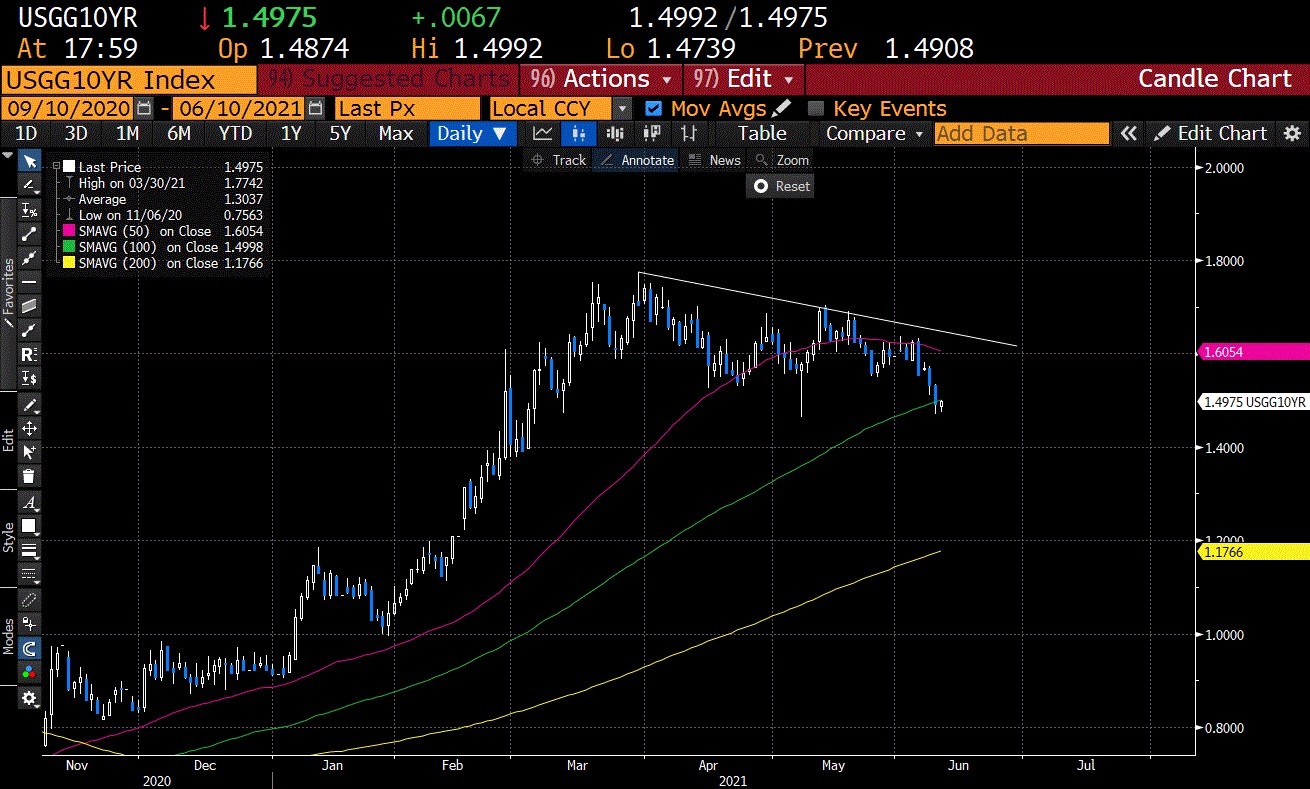Before you turn around and dismiss the insinuation in the subject line, hear me out for a minute. It was in a post early March when I mused that the 150bp area would be the ceiling for 10-year Treasury yields. Some readers scoffed at such forecast, and for a while, I looked like the emperor with no clothes when the yield hit an intra-day high of 1.77% later in March, with all pundits estimating an eclipse of the 2% threshold in short order.
To be fair, amid the ever surging inflation chatter there were numerous further attempts of a break-up towards that level. Eventually, however, the market capitulated earlier in June, and a significant bond rally has since ensued. The 10-year yield has now crashed back below the 1.50% mark and appears to be heading lower still. So, what do you know…? I may have had a point with my outrageous March call after all.
But more importantly, what is happening here? Either the inflation monster isn’t rearing its ugly head as much as we have all thought, and despite relentlessly climbing commodity prices the market anticipates a transitory nature of things. Or the Fed is materially intervening, which looking at the most recent data isn’t exactly obvious as they have on average sort of kept to their 120 billion per month purchase operation.
If neither of these is the reason, what else could it be? I can think of a constellation that may defy genuine market mechanisms. Remember, this space has been beating the drum on America’s worsening current account and the dynamic this is likely to cause if the capital account cannot catch up. Surplus countries like China and Japan are increasingly awash with excess dollar positions that their respective central banks need to digest.
Particularly in the case of China, this creates a conundrum. If the PBoC wasn’t willing to buy dollars to neutralise the overhang, it would impose upward pressure on the Renminbi, probably much more so than we have seen so far. The Chinese seem to be caught in an impossible position. They might not want their currency to appreciate, but in order to contain flaring import inflation, they almost have to let it happen. Else, they would have to circle back the excess dollars, ie buy Treasuries.
Whether the PBoC has bought US bonds aggressively recently and more or less facilitated the ceiling of 150bp I have been talking about, we will only really see in the TIC data that is being released with a 2-month delay. In any case, there has been a slight uptick in China’s holdings observable in previous months. So, there is a chance that the Chinese are biting the bullet and are active in the market, against all the odds.
Another aspect for long yields to have retreated is the headwinds the Democrats are running into passing their historical infrastructure package. Markets have priced in that piece of government stimulus spending and the GDP impact as well as the inflationary effect it would have. Are people seeing through and beyond the much-debated sugar high the economy is already on and is expected to be on for the rest of the year and into 2022?
Or is there even an understanding between Washington and Beijing that has set in motion these unexplained moves? Despite the confusing propaganda these days, such as Asia Tsar Kurt Campbell’s diction of engagement-with-China-is-over, engagement is well on track. Not only did trade representative Katherine Tai and Treasury secretary Janet Yellen have conversations with vice premier Liu He, within those past few days the respective commerce departments agreed on renewed trade and investment links.
What if the parties have come to an agreement on a modus operandi that allows China to better control a gradual appreciation of the Renminbi? What if China agreed on cycling back surplus dollars into the Treasury market where they are badly needed to support America’s stimulus craze? What if in return Washington delivers some flexibility on export bans, tariffs, and black-listing Chinese companies? A lot of Ifs, but the markets are telling us some story here, as they always do.
